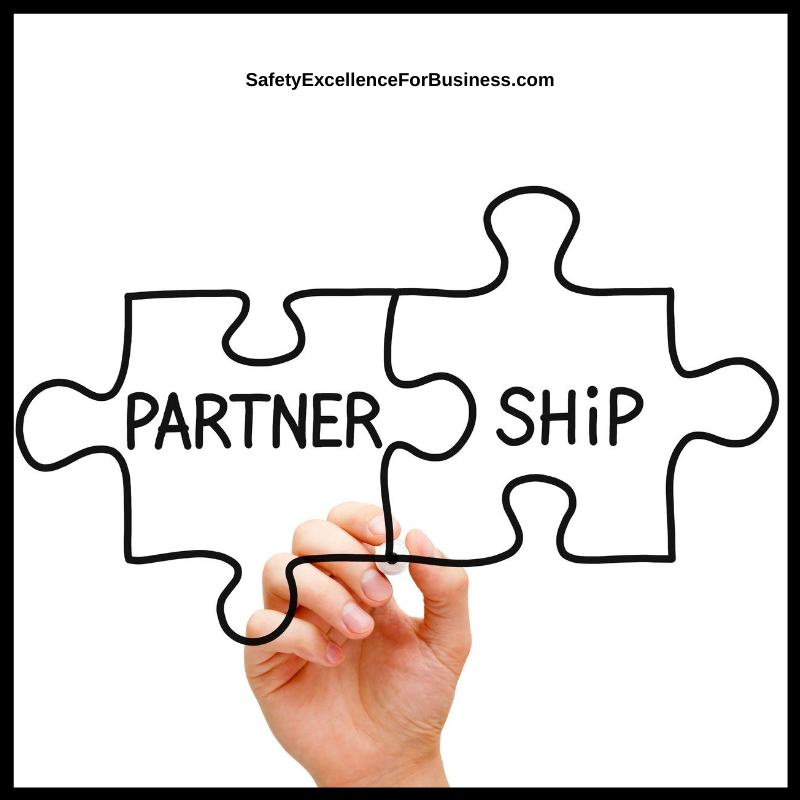Let’s try to climb out of this hole for the safety of our employees!
As you know, I have been talking for a long time about the need to reduce the number of people being killed at work and safety statistics have shown why there’s concern.
The Bureau of Labor Statistics has reported that about 5,200 people have died at work for each of the last 10 years. With all the people working diligently in the safety business, I expect that most people would think that these numbers should be getting lower and lower, but they are not going down.
Many ideas, models, and theories have been suggested, but we are not seeing a decline in the number of people getting killed. I wonder if there may be a deep, subtle force at work. The way we look at the people in the organization and think about them could be a key.

Descriptions Are Critical
The most common label we apply to the people in organizations is “Employee.” This is a name for the contract between them and their employer. Most of us use this term to refer to anyone reporting to us in our organizations.
This may be troublesome in subtle ways because it carries a lot of baggage.
As their supervisor, one could feel you have the power to tell them what to do, to scold them, discipline them, make all sorts of demands on them, blame them for mistakes, not listen to them, even bully them. Many (uncaring and unenlightened) supervisors treat them as less than us, not as smart as us, etc. Employees can be seen as things which we can just move around (like puzzle pieces) as we please – all while being quite nice, but they can see right through this.
Most people do not like to be treated this way. All these employee-focused behaviors prevent trust from building. It blocks learning and performance from improving. We can push safety improvements very hard, but most of the time only get to compliance, which is where most organizations are stuck. Compliance does not get the organization to excellence.
Everything Changed
When I learned to think of the people as “people,” everything changed.
There were still differences in roles and responsibilities, but we are all people with similar hopes and desires as I have. They had good intelligence, knew a lot that I did not know, and wanted to make a positive difference. We all wanted to work safely, have the business succeed, and feel better about ourselves.
People do want to go home from their work shift with all their body parts intact. We were partners in this work. We treated each other with respect, told the truth, shared almost all information except personal stuff, helped each person to see the importance of their work, gave and received feedback. Bullying and harassment virtually disappeared. It was safe for us to talk together and share our ideas and thinking, to find better and safer ways to accomplish our tasks.
Partner-Centered Leadership Makes the Big Difference in Safety!
We discussed the work together to find better, safer ways to do it. People learned to make decisions to solve their own problems. More decisions were made close to the actual work. We coached each other. People self-organized within the boundaries we set together. The collective intelligence of the whole organization rose and got a lot better. Great ideas emerged from all around. Energy and excitement grew. Everything changed as we learned and grew together.

My role as plant manager became much easier as more and more people pitched in and contributed. With so many making contributions, our total performance improved with the number of injuries dropping by 97%, emissions to the air, water and earth dropping by 95% and earnings rising by 300%. We used these metrics to keep track of things, but we led the improvements by partnering.
As we (as people) learned to partner this way, all the ways we worked together changed having a positive impact on all we did. This would not have worked if we had tried to stove pipe it and just do it for safety. Everything is connected and interacts so working on the whole systems is critical.
This effort to create a better way to safely and more economically do our work was not easy.
At first, standards had to be reestablished, which was difficult. People needed to know that we were determined to improve and quit hurting people. There was a serious problem with bullies who were blocking improvements. In the first two years I had to terminate about 30 people (there were 1,300 people at the Plant) for flagrant safety and bullying problems. Things got a lot better after this first difficult period. Most people want to have a safe environment and not have to deal with bullies.
We also promoted the most qualified people as openings developed to lead different parts of our efforts. We needed the best quality of thinking and working together in order to be really successful. We wanted to be good, not just look good! We became one of the best performing plants in the DuPont Company, in just 4 years.

Conclusion
We call this way of working “Partner-Centered Leadership.” It applies to all we do. Just a simple shift in how we think about things leads to big changes in everything.
I urge all of you to think about the people as people, build relationships of respect, trust and open communications.
I would be pleased to talk with any of you about this if you would like to do that. Please call me a 716-622-6467. I live in the Eastern Time Zone; calling between 9:00 am and 4:00 pm would be best.






Speak Your Mind